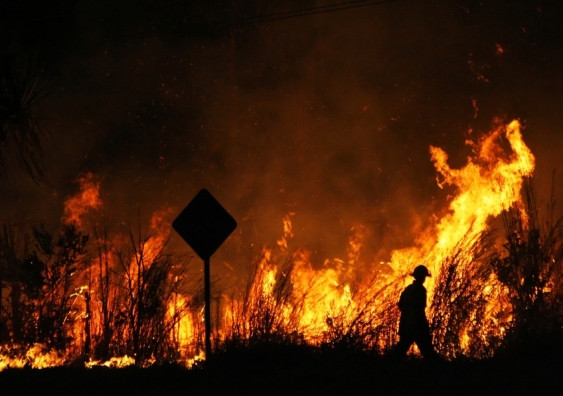Debunking BAL Reports: A Guide to Recognizing Your Home's Bushfire Risk
Debunking BAL Reports: A Guide to Recognizing Your Home's Bushfire Risk
Blog Article
Exactly How BAL Record Impacts Bush Fire Defense Measures
In the world of bush fire protection, the Building Attack Level (BAL) report stands as a crucial tool that considerably affects the safety and security and strength of residential or commercial properties in fire-prone locations - BAL Report. The impact of a BAL analysis prolongs much beyond plain documents; it works as the keystone for identifying the appropriate building criteria and fire defense actions required to mitigate the dangers positioned by bushfires. As areas come to grips with significantly extreme fire periods, understanding just how the BAL record forms these protective actions comes to be critical for house owners, policymakers, and builders alike
Comprehending the Bushfire Attack Degree

Significance of BAL Record Evaluation

Moreover, the BAL report analysis functions as a fundamental action in adhering to lawful obligations and demands connected to bushfire defense. Local councils and authorities frequently mandate the entry of a BAL report as part of the planning and building approval procedure to guarantee that homes are sufficiently safeguarded against bushfire dangers. Falling short to perform a thorough BAL record evaluation can cause poor defense procedures, leaving properties at risk to devastating bushfire incidents.
Building Requirements Based Upon BAL
A thorough understanding of the Bushfire Strike Degree (BAL) enables residential or commercial property owners to execute building requirements tailored to their details risk account. Construction criteria based on BAL are essential in minimizing the impact of bushfires on buildings. The BAL ranking categorizes the prospective risk a building deals with throughout a bushfire on a range from BAL-Low to BAL-FZ (Fire Area)
Carrying Out Fire Security Measures
With the foundation of construction criteria based on Bushfire Attack Level (BAL) in area, the focus currently shifts in the direction of the useful application of fire defense procedures to fortify residential or commercial properties versus bushfire risks. Carrying out fire defense actions involves a combination of passive and energetic strategies to enhance the resilience of buildings in bushfire-prone locations. Passive procedures include using fireproof building materials, setting up cinder guards on vents, sealing voids in wall surfaces and roofing systems, and preserving a clear room around the residential property without flammable vegetation. Active steps incorporate having firefighting devices easily available, such as hoses and water pumps, in addition to creating a defendable room around the property by removing plants and having a well-kept yard. Furthermore, establishing an evacuation plan and making sure all citizens understand emergency situation treatments are crucial elements of reliable fire defense steps. By incorporating both passive and energetic approaches, residential or commercial properties can dramatically decrease their susceptability to bushfire occurrences and boost the safety of occupants.
Safeguarding Residences Against Bushfires
Properly guarding homes against the destructive impacts of bushfires needs a extensive and proactive strategy to fire security procedures. Furthermore, sealing spaces and vents to stop coal invasion, as well as including fire-resistant doors and windows, can help strengthen Full Report the home's protection versus bushfires. By accepting a proactive stance and integrating these protective measures, house owners can considerably boost their Discover More opportunities of guarding their homes versus bushfires.
Final Thought
In final thought, the Bushfire Attack Degree (BAL) report plays a critical duty in determining the necessary security measures against bushfires. By analyzing the BAL, construction criteria can be tailored to minimize the dangers and make certain the safety and security of homes in fire-prone areas. Implementing fire protection actions based on the BAL record is vital in protecting homes from potential bushfire hazards. It is critical for home owners to focus on BAL analyses and adhere to advised construction requirements to boost bushfire resilience.
In evaluating bushfire risk to residential properties, recognizing the Bushfire Attack Degree (BAL) is a vital component for carrying out reliable protection measures. On the whole, a clear understanding of the Bushfire Assault Level is important for implementing adequate defense actions and mitigating the impact of bushfires on buildings.

Report this page